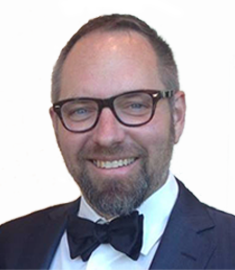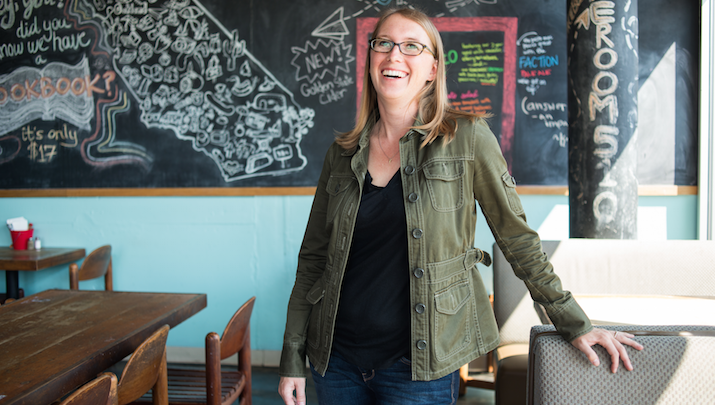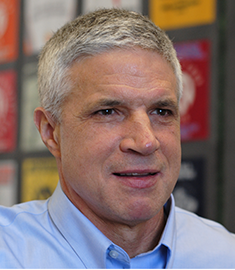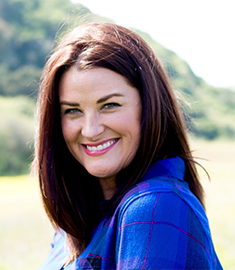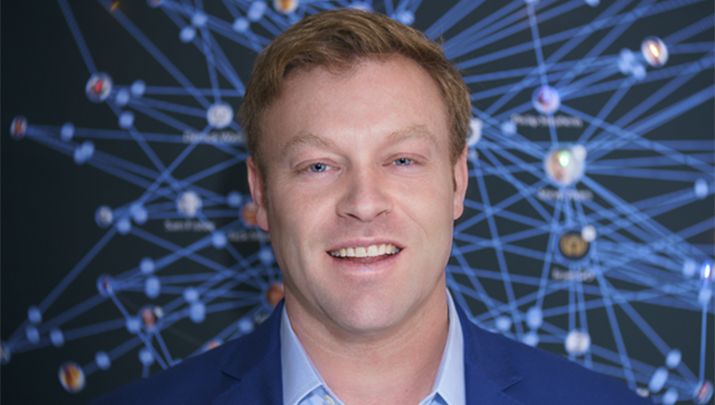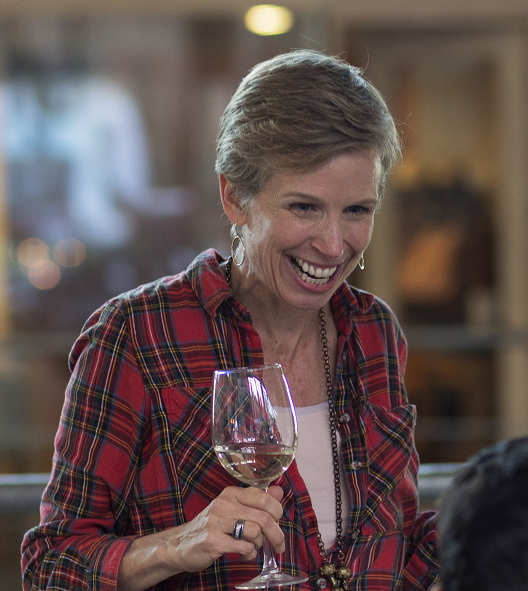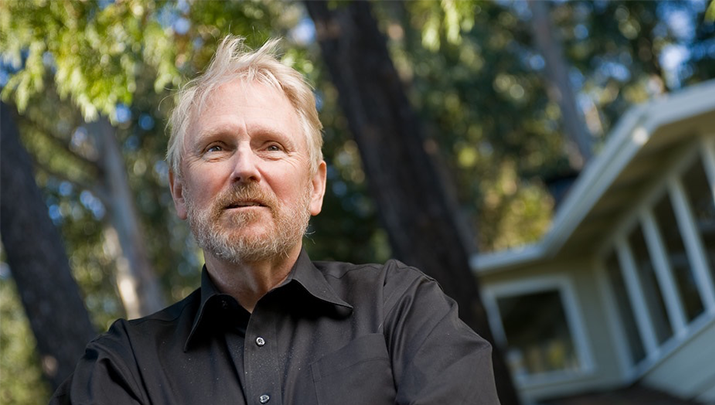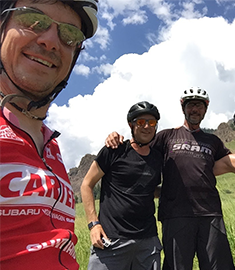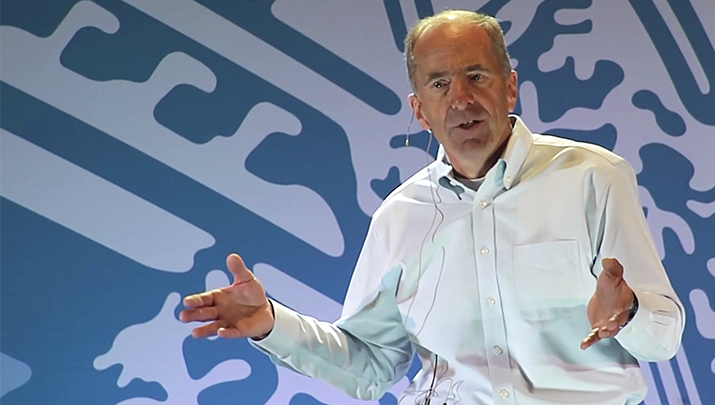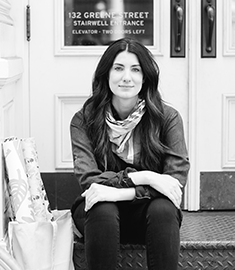How Sustainable Chocolate Helped Me Find My Purpose … And My Profit
After I dropped out of high school during my senior year, I went looking for adventure.
I set sail in an old wooden boat without a motor, and while traveling around parts of Central America, I fell in love with Southern Belize. The lush Maya Mountains, the barrier reef and the amazing, diverse people won my heart.
In the late ’80s and early ’90s, Southern Belize was very remote and felt like the end of the world. It was there that I began volunteering for a small conservation foundation protecting important plant species and learning about Maya sustainable agricultural practices. With nothing but a strong back and boundless curiosity, I worked with the Maya on their cocoa farms, hunted with them and went on rain forest expeditions to support conservation work.
During my time in Southern Belize I saw that social, environmental and economic degradation are business problems. It became clear to me that if cocoa farmers were paid a better price for their crops, their lives would improve. They would be able to pay for school for their children and access better health care.
This issue was not unique to the cocoa farming families of Southern Belize. This was an industry-wide problem. I knew I needed to take action, and over the next decade I worked to bring organic cocoa beans to the United States and promote fair trade farming practices, building relationships with farmer groups.
In 1994, I imported my first container of organic cocoa to North America and pioneered the organic chocolate market. My company had tremendous top-line growth. I was investing heavily in developing the cocoa supply in Latin America and Africa, contracting with manufacturers in the U.S. and abroad and working hard to stay ahead of constant cash demands. At that time, I was singularly focused on the mission of my business. To achieve the largest impact, we paid high prices to farmers in return for high-quality cocoa beans, invested in training for sustainable tropical agriculture and often financed the harvest itself to ensure that farmers had a decent cash flow in places where credit was unavailable.
But that meant we were working on razor-thin margins. The downward pressure on price, combined with the fact that we didn’t control a consumer-facing brand, plus the high cost of raw materials and financing meant that we never made a profit.
That was fine in the ’90s. But when the financial market dried up in 2001, we weren’t able to carry on. I had missed what was really necessary to build a sustainable business — profit.
I wanted to create a business that demonstrates that people, planet and profit not only can coexist but that long-term success requires equal investment in all three. I believed that our business could be a powerful tool for positively impacting everyone from farmers and the landscapes they steward to chocolate lovers worldwide.
In 2004, I founded Theo Chocolate. At the time, Theo was the first and only bean-to-bar maker of organic, fair-trade-certified chocolate in North America. By controlling our brand, manufacturing and key raw-material supply chain, we are able to retain greater margins, pay better prices to farmers for high-quality cocoa and sell our products at competitive prices.
Every decision we make as a business reinforces the idea that doing the right thing should never be the rare thing. Our values at Theo permeate everything we do, and the people who buy and enjoy our products do so in part as a reflection of their own personal values. To me, we have created something more powerful and meaningful than excellent candy bars.
Theo’s mission is simple but profoundly ambitious: We’re dedicated to making the world a better place based on shared values and a shared love of cocoa. The only way for us to truly deliver on the promise of our brand is to grow as a business and make investments in our long-term potential. I believe that my vision requires Theo to be an Evergreen business. Staying independent and investing in our future success is the only way that we can build the next great American chocolate company.
Joe Whinney is the Founder and CEO of Theo Chocolates.
Power of People-Driven Leadership
The food industry is notoriously difficult with thin margins, disappearing trends and a constantly rotating employee base. But Erin Wade has found a way to use the industry to build opportunities not only for herself but also for others. As co-founder and CEO of Homeroom, her full-service mac-and-cheese restaurant, she is building a unique culture within her industry. As a savvy Evergreen entrepreneur, she is creating a highly profitable growth business to fulfill her own aspirations and fostering a culture her employees value. And, Homeroom’s profitability puts it in the top 5 percent of performers in the industry.
In her talk, Erin shares her experience in building the culture of incredible food and fairness to all employees regardless of their role through recruiting, education and transparency. She also explores the challenge of how to maintain all this goodness as she grows beyond her first location in Oakland.
Taking The Field: My Journey To Evergreen Success
The best thing my father ever did for me was tell me I couldn’t come back to the farm.
I was 22 at the time and had just graduated from Ohio State University with a degree in horticulture. As the oldest of eight kids, I always thought that I would one day run our family farm. But at the time, the farm wasn’t making much money, we had no room to expand, and between my father and his brother (who was his partner on the farm), there were 16 hungry children to take care of. My father needed one fewer mouth to feed, not another partner.
At the time, I was terrified. But looking back, it’s the best curveball life ever threw at me. I had always had an entrepreneurial bent; now I had to go out and make it on my own. Through the years, the Evergreen ideal of Pragmatic Innovation has inspired me to stay nimble and find new ways to thrive in an ever-changing market.
When I started out on March 17, 1977 (St. Patrick’s Day, I have some Irish in me), with nothing but a pickup truck, a few shovels and a lawn mower to my name, I went into lawn maintenance. On the farm, we grew sod, so I asked our sod customers if they needed lawn help. Most said no, but a few said yes, and I was in business.
I quickly realized that there was limited upside in residential care. Most people wanted their lawns mowed on Friday to look good for weekend events, and there were only so many lawns I could do in one day. But commercial properties needed full-time maintenance to keep up their curb appeal through the week.
My residential customers helped me land some commercial clients, and that’s how I met John Sawyer, an owner of the Cincinnati Bengals who also had a commercial office park. He was one of my first customers with whom I worked out a yearly contract instead of just charging per cut. John was impressed with our work, and in 1982, after the Bengals’ first trip to the Super Bowl, he asked if I could help improve the turf at the team’s training ground.
It was in terrible shape. There was a 3-foot elevation difference across the field. The pasture grass was in horrendous condition. But I saw an opportunity. I had been interested in the work of a professor I knew at Purdue University, Dr. Bill Daniel, who had devised a manual system of subsurface vacuum pumps that could quickly whisk away water after a storm or irrigate the field from underneath to keep the grass healthy during the dry season.
It was an expensive proposition, but Sawyer was willing to take a risk on it. My team worked day and night to get that field installed correctly. It was a huge challenge, and I loved every minute of it.
That job improved our reputation with local high schools and universities and helped supplement our commercial grounds-care business (which continued to grow). But by the late ‘80s, the job was no longer fun or challenging. More players were entering the market, and it was quickly getting commoditized, pushing prices down. We no longer had enough to differentiate us, and I was working around the clock just to make a modest return.
So I took the bold step to sell off the majority of our business except the sports turf work, the only part of our portfolio where we were differentiated and that I still truly loved. It was a big risk, but in order to grow, I knew we had to stand out. The vacuums on the field we had built for the Bengals had to be operated by hand, which took a lot of oversight. I saw this drawback as an opportunity. I purchased the original technology from Daniel, and we then huddled with my research colleagues at Ohio State to devise a system that could remove or add water with the push of a button from anywhere.
Once we had a functioning system prototype, I leveraged my relationship with the Bengals to work with other NFL teams. The Miami Dolphins wanted to improve their ability to handle Florida’s monsoon rains. They also wanted the grass at their stadium, which also is the home of the Marlins, to look like Augusta National Golf Club’s. We damned near killed ourselves installing that field. A hurricane hit mid-project, and in 20 minutes we lost weeks worth of work. But in this business, opening day is opening day — it can’t be pushed back. So, we worked around the clock to get back on track to finish within the 43-day window we were given before the Marlins’ first pitch.
The system, which is now patented as Prescription Athletic Turf, was a success and led to many jobs with other teams, including the Baltimore Orioles, the Los Angeles Dodgers and the Atlanta Braves. But that didn’t mean I could sit back and watch the grass grow while my company grew around me.
I realized that as good as our new systems were at managing the water through weather extremes, we now had issues with keeping the well-used grass in place. I went back to the drawing board, and with the help of my research team came up with a synthetic-grass hybrid that has the look and feel of natural grass along with the anchoring strength and durability of synthetic turf. This patented product, called Eclipse, helped us land additional stadiums in the U.S. as well as the 2000 Summer Olympics in Australia. That put us on the world stage for stadiums looking for high-end natural turf systems.
But life threw me another curveball a couple of years later.
Through the mid ’90s we’d ridden a wave of replacing AstroTurf, which was rough and led to lots of player injuries. Synthetic grass wasn’t really something I worried about. That was until I went to Nebraska in 1998 and saw a new kind of artificial turf. It was shockingly good. I just about died when I touched it because I knew this wasn’t a fad — this could put me out of business.
We pivoted again. Our hybrid research had taught us a lot about synthetics, and we were able to develop our own synthetic, which plays like natural grass. Today we have more than 300 fields using our branded synthetic products.
Like all Evergreen companies, we continue to have our ups and down, but I strive to keep my team focused on the future, always trying to read the tea leaves to predict what the market will throw at us next. We love being in the curl of the wave. Our team today is 85 members strong and ready to tackle Pragmatic Innovation challenges, which has given me the ability to step back from the front firing line just a little and focus on our long-term strategy.
When I think about my father, who died three years ago, I know he was proud of what we’ve achieved at my company. He was my greatest mentor and coach. He pushed me into the game and showed me that I had it in me not only to compete on the big stage, but to win.
Joe Motz is the President and CEO of The Motz Corporation.
What Bootstrapping My Budding Business Taught Me About Hiring
In 2010, I quit my job as director of alumni relations at Stanford Law School to pursue my dream to start a business that did something good in the world. My goal was to disrupt the $3 billion e-commerce flower industry while helping local flower growers and providing a better option, both environmentally and aesthetically, for consumers.
Most people don’t realize that the majority of flowers sold here are flown in from other countries, often coated in chemicals that are illegal in the U.S. On top of that, the flowers are at least a week old. Online flower options are limited and expensive. I personally found it frustrating that when I wanted to order flowers for my mom in rural Indiana, I was relegated to choosing from online designs that just didn’t match my personal preferences. After researching, I found I wasn’t alone in my frustration. I wanted to fix this. After all, sending flowers is essentially sending love to someone, so it should look like love went into the floral design.
I launched Farmgirl Flowers from the dining room in the San Francisco apartment I shared with my boyfriend with $49,000 of my own savings. My big idea was to design one daily bouquet made with seasonal, locally grown flowers. I also wanted to build an integrity-driven company that hired the right people and treated them well; this included a full-time team with full health benefits and workers compensation, and investing in them, so they’ll be invested in the future of the company.
After pitching to over two dozen venture capital firms rather unsuccessfully, it seemed like the best way for me to ensure my long-term vision for my company was to go Evergreen.
This means that not only do I have to be extremely careful with our cash flow, but I also have to be very strategic with our growth based on how and when we can afford to fund it using our profit. I see that as one of our strengths, though, and not a weakness. For example, it took me three years longer than I anticipated to launch national shipping because it took me that long to save enough money to self-fund the program. I also opened and closed a second location within a year because it wasn’t working. And, because I don’t have a cushion of several million dollars of investment money in the bank, I have to quickly identify what’s working and not working.
Bootstrapping my business has also taught me a lot about finding and retaining employees in today’s culture. I hired my first worker when I was still in my apartment, meaning I had to find someone I could trust to handle the day-to-day assistant tasks while I established literal and figurative boundaries between my work and personal space.
Now, as my company blooms, I am faced with new challenges. I have to adapt to a local work culture in which I am in desperate need of loyal, hard-working young people who are content with non-tech salaries, in the most expensive city in the U.S. I need to retain them for longer than the six to 12 months this demographic currently tends to stay in positions so that we are not constantly turning over good talent. We’re a business that needs to be able to scale to 10x daily sales for key holidays and be able to attract temporary talent for those times throughout the year. And, without funding, I don’t have a robust executive team to help carry the load. I like to joke that I’m the entire C-suite. To say this is challenging would be a bit of an understatement.
Hiring is always a learning process. But by going through that process myself instead of relying on financial backers to direct me on what roles to hire and when, I’ve been able to better understand my company and our true needs. I can’t afford to be wasteful with even a dollar, so everyone wears lots of hats, which I think makes us much stronger as a team.
Instead of fancy perks, I invest in incentives that I believe are more important for growing the business. For instance, instead of free lunch, I saved to be able to afford full medical insurance for the team. We don’t have fancy bubbly water in the refrigerator, but I’m working on getting a 401(k) alternative set up for my employees.
I also feel that being Evergreen has provided me with a rich sense of community, a ticket into a club that I never would have known existed. I love my network of female founders who support one another’s private companies and whom I rely on for input in my decisions.
Lastly, I don’t believe success has anything to do with level of outside funding. Farmgirl Flowers succeeds because of the quality of our products and our superior team. And you can see that in our financials, as well. Farmgirl Flowers has increased its revenue by at least 200 percent every year since its inception.
And for the skeptics who say Farmgirl cannot grow quickly without venture funding, we are expecting to hit between $10 million and $11 million in revenue this year, up from $4.4 million last year, and we are profitable.
Now that’s something to celebrate.
Christina Stembel is the Founder and CEO of Farmgirl Flowers.
What Evergreen Businesses Can Learn From the Navy Seals
Successful military units must be ever mindful of their surroundings and quick to adapt as circumstances change. The same is true of successful businesses. David Silverman, the founder and CEO of CrossLead, and a former U.S. Navy SEAL, applies many of the lessons he learned fighting in Iraq, Afghanistan and Southeast Asia to his current mission: teaching companies how to adapt and win in their shifting environments.
Silverman explains how major recent changes in the collective business environment—including interdependency and a greater need for speed—can make or break an Evergreen company, depending on how it reacts to them. He also breaks down how businesses can use new, tested military principles and approaches to achieve their objectives.
Keeping Family In The Picture At My Evergreen Business
Each bottle of Kingston Family Vineyards wine shows the front door of our home in Chile. It represents five generations of family in the Casablanca Valley, beginning with my great-grandfather Carl John Kingston’s elusive search for copper and gold in the early 1900s near Santiago. Generations later, the Farm still serves as the cornerstone of our family business. Today we open the same door of the casa patronal, built more than a century ago, and invite our customers to explore our estate-grown vineyard in the heart of Chile’s wine country.
Since we started our farm in the 1920s, we’ve made the conscious decision to keep our family in the picture. Although I live in the San Francisco area with my husband and three daughters, that Chilean century-old farmhouse in the middle of 8,000 acres is also my home. I’m there every other month and for a year, we lived there full time and sent our kids to school with their Chilean primas. It’s where the five branches of my extended family gather for special occasions and where many of us spent summers riding horseback as children.
Mixing family and business can be a challenge, especially when you’re building a company for the long run. Many Evergreen entrepreneurs worry about family dynamics in the workplace — not wanting to taint their business with their family, or their family with their business. As a next-generation leader of the Farm, I work closely with my father, brother, sister-in-law and Chilean uncle and aunt. I’ve had to set clear personal and professional limits and learn to listen in ways that I never would have had to do in the corporate world. Most important, I’ve had to find a different way to lead.
I started my career working for digital media companies such as CNET in Silicon Valley. With a Stanford MBA under my belt, I got a charge out of working in the fast-paced, go-go world of the early internet in the late ’90s. But when I turned 30, I hit a wall. The tech world began to feel like a game, and I desperately wanted to switch to something that was more meaningful to me.
When my brother Tim asked me to help get the vineyard off the ground, I jumped at the chance. At that time, the Farm focused mostly on dairy and beef cattle, supplying 5% of the fresh milk to the nearby capital city of Santiago. We had dealt with the vagaries of commodity pricing for two generations.
Our idea was to diversify into managing a top-quality hillside vineyard, and focus on less-common grape varietals like pinot noir and syrah. If we built a reputation as a world-class vineyard, we could create a sustainable business and help insulate the Farm from the booms and busts of Chile’s export economy.
Tim took a board seat and as president, I led sales and marketing. My father, Michael, stepped in as our CFO. My uncle Enrique managed daily operations at the vineyard and Farm, and my aunt Sally managed everything related to the extended buildings and grounds.
In a corporate context, there would have been a clear hierarchy with annual reviews, raises and promotions. Now, we had to provide that internal feedback to one another. That’s hard enough to do with a business partner, but even harder when the person to whom you’re giving feedback is your father.
At first, my dad wanted to work nights and weekends, and he gently chided us for not doing the same. But my brother and I were both raising young families, and it was important to us that we had time set aside away from work. To overcome our conflict, we had to sit down and talk honestly — not always the easiest thing to do with family members. But with time, and lots of practice, we got better at it.
Now we’re very careful about when we’re on work time and when we’re on family time. We try to make sure we don’t discuss the Farm on family time. During my wedding weekend in 2003, we hung a sign on the front door of our family home that said, “This is a wine-free zone” to discourage everyone from talking business (not from drinking).
We’ve also learned that family members often work best together when we have our own independent, yet complementary, businesses. Each generation needs to lead in its own way. In 2003 we started Kingston Family Vineyards, our own wine label from our estate-grown grapes. Our top-rated Kingston Family wines further elevate our vineyard’s brand.
We continue to sell 90% of our vineyard production to other Chilean winemakers. Uncle Enrique is uniquely positioned to oversee those key local relationships. Our own winery is a vineyard client (with most-favored nation status). Over the last 10 years, I’ve led our direct-to-consumer distribution strategy in the U.S., a unique business model for a small Chilean winery.
Luckily, I’ve never had to persuade our family that we should be Evergreen. We’ve been focused on the long term from the beginning, with no interest in outside investors. Now that I’ve led our family business for 15 years, I can’t imagine wanting to do anything else. The benefits that come from working with your loved ones far outweigh any tensions we’ve had to overcome. There’s no one I’d rather be building my Evergreen business with.
Courtney Kingston is the Founder of Kingston Family Vineyards.
Even Evergreen CEOs Need To Think About Exits
One of the central tenets of Evergreen businesses is that they stay private. But that doesn’t mean there will never be an exit in the form of a change in leadership. For his book “Finish Big,” author Bo Burlingham spent years talking to entrepreneurs about the best way to exit — whether through a sale or by passing the company on to the next owners. His advice: Start preparing for an exit years in advance.
Burlingham explains that in order to leave happy, you need to view your exit as another natural phase of the business, not a sudden event. By knowing yourself and your purpose and doing right by the people who have shared your journey, you can create a happy, satisfying life for yourself after your exit.
Rucks, Family And The Power Of Listening: Learnings From Sun Valley
Almost 100 businesspeople went to Sun Valley, Idaho last week for the annual Tugboat Summit. I was one of them. I went hunting for concrete ways to make my company stronger, to grow it at a reasonable pace while remaining purposeful and putting my people first. In other words, to become more Evergreen.
Now, as I write this on a cross-country flight home, I face the task of unpacking an enormous haul. I pore over my pile of inspiring insights, new relationships, novel directions and constructive exercises. Then it hits me. Commander Rorke Denver is a damned genius.
Rorke spent more than a decade fighting in Afghanistan and Iraq. He survived countless battles and watched good men die for a cause that didn’t always make sense. He spent many days with a rifle in his hand, multiple radios strapped to his chest and a pack of heavy gear on his back. He thought deeply about what lessons — large and small, literal and figurative — he could take home to share with the rest of us. One of the best ones Rorke presented to us in Sun Valley was about that heavy pack: “Choose your ruck wisely,” he said. Pick one that won’t tempt you to overpack.
Post-summit, I think I may be coming home with an oversized ruck. But it’s hard not too. The annual summit is like a Middle Eastern bazaar of mind-expanding business ideas and inspiring stories. I didn’t want to leave any good ones behind.
I got to hear my old friend F.K. Day tell the story about the life-changing insights that he, his brother and a few friends gained stumbling through the early years of building Chicago-based SRAM, now the second-largest maker of bicycle parts in the world. One of the most compelling lessons: Get close to your customers and listen to them. Their feedback will make you a better innovator.
I got to hear celebrated entrepreneur Amy Simmons, founder of Amy's Ice Creams in Austin, Texas, explain how she regards her Evergreen approach to business as a powerful antidote to the widely-held view that capitalists have a “fuck you, I got mine” attitude. Amy is one of many Evergreen owners who insist on sharing key financials with employees. She is a relentless community-builder and philanthropist. She helped a Texas cancer center build a game room that resembles an ice cream shop and has freezers stocked with frozen treats for the young patients and their families.
Then there’s artist Phil Hansen, famous for his 2013 TED talk, “Embrace the Shake,” who reminded me that “creativity sucks.” That’s his shorthand way of saying that if you rely only on true “bolt from the blue” moments of inspiration, you’re in trouble. It’s important to come up with systems that can dependably produce incremental creative breakthroughs — practical innovations, if you will.
For every idea I got from a formal presentation, I picked up two more in casual conversation. Melanie Dulbecco, chief executive at San Francisco-based R. Torre & Company, makers of Torani syrups, inspired me with a passing suggestion that my colleagues and I create a picture — an actual, physical image — of our shared vision for our firm’s future. I expect us to be sharpening our colored pencils in the weeks and months to come. Darcey Croft, founder of beauty-products startup Barenaturals, challenged me to set aside my reticence to self-promote. Carrie Van Winkle Greener, founder of Pappy & Company, reminded me that one of the most powerful sources of new business ideas and energy is one’s own family. The list goes on and on.
If you didn’t attend the summit, the good news is that you’ll be reading about all of these ideas and watching all the presentations in the coming weeks and months in the Evergreen Journal. Hell, I’ll be reading the EJ and reviewing the presentations myself, just as a way of refreshing my mind. But still … There’s something about being at a Tugboat event that is hard to capture. And I’m not just talking about how we all went skeet-shooting in Sun Valley.
What is it? Dave Whorton, the former venture capitalist who started Tugboat, recently explained it to me when I wrote about the Evergreen movement for Sun Valley-based magazine BigLife. Most Evergreeners, he says, are “lone eagles.” Eagles almost never flock. “But in extraordinary circumstances — once a year in Haines, Alaska, for example — they do flock,” he said. And like eagles, when Evergreeners get together, “amazing things happen.”
Stephane Fitch is the Founder of FitchInk.
An Evergreen Empire Built On Stewardship, Restraint And Reverence (VIDEO)
In the 1950s, Earl and Carol Holding moved to the Wyoming desert to take over a failing gas station/motel/cafe. That was the first step toward building what Tim Silva calls an "incredible empire" that includes Sun Valley Resort, the home base for Tugboat Summit and Sinclair Oil Corp. Silva, the resort's general manager, says the Holding family used core Evergreen principles to grow their assets.
The conservative couple initially clashed with this free-spirited mountain town, but by investing in the resort and its people, becoming active members of the community and preserving the natural beauty of their surroundings, they earned the community’s respect.
Paper Dreams: How the Support of My Family Business Helped Me Start My Evergreen Company
My family runs a successful 80-year-old company. But when I wanted to jumpstart my own dreams, I was able to use their support system to build my own Evergreen company.
In the Evergreen community we talk about Pragmatic Innovation — embracing growth by taking calculated risks. That’s exactly what I did three years ago when I founded Chasing Paper, a removable-wallpaper company. It’s a forward-thinking, New York-based design company, but its roots stretch deep into the Midwest. I grew up in Milwaukee, Wisconsin, where my family runs Kubin Nicholson, a large-format printing company founded in 1926. Though the paper business is in my blood, for most of my life I was always more passionate about striking out on my own.
For three and a half years I worked at National Geographic in New York, building corporate partnerships. At the time, I honestly had no interest in working in the family business.
But in 2010, my father asked me if I would help him usher the company into the 21st century. I somewhat reluctantly agreed and set up my own satellite office in Manhattan.
I tasked myself with building Kubin Nicholson’s website and helping with marketing content, things the company had never really had before. At the same time, I started learning about the business in a way I hadn’t as a kid — and I actually found it to be fascinating. I was riveted by all sorts of granular details, like what materials they were using for printing and how they created billboards. Within a couple years, I brought in National Geographic as a Kubin Nicholson client, and I started looking around for some other fun opportunities.
A friend, Katia Beauchamp, co-founder and CEO of Birchbox, asked me to help create some birch tree wraps (made from Kubin Nicholson paper) for the support beams in her office. It was just a one-off project, but it turned out to be so exciting. The paper beams were aesthetically transformative, and they created a lot of buzz. Plus, they weren’t permanent, which is important when you’re in a rental office space.
Flying on this success, I looked into removable wallpaper. I found some very expensive options and some low-end wall decals. But there was nothing in the middle. No one was creating well-designed, on-trend removables that felt like traditional wallpaper. The lightbulb flicked on.
I launched Chasing Paper with a small amount of capital, one photo shoot and a website. I wanted to make sure I was moving forward but limiting my risk as much as possible, so I decided to place Chasing Paper under the umbrella of Kubin Nicholson. Think of it the way West Elm is part of Williams-Sonoma but also stands as its own company. The family business helped me establish Chasing Paper, although we manage our own profit and loss.
Three years later, we’re tracking to grow sales 15 percent beyond our projections. Chasing Paper has been written up in the New York Times, Wall Street Journal and Martha Stewart Living. We have an exclusive collection with West Elm and another with Bloomingdale’s. I work with the top materials designers and have even staged photo spreads in Real Simple and Better Homes and Gardens. The right people are paying attention.
Chasing Paper produces 100 percent of its prints through Kubin Nicholson. I liaison for Kubin Nicholson, and I’m still on their board. We have a lot of crossover with people and ideas. There is a Kubin Nicholson production manager who works on Chasing Paper about 30 percent of her time. And while I’ve learned so much about the paper industry from my father and grandmother, I like to think they are learning from me as well. They say you can’t teach an old dog new tricks, but Chasing Paper has certainly given Kubin Nicholson a lot to consider in the world of e-commerce and technology. In fact, after Chasing Paper set up a digital sales portal, Kubin Nicholson followed suit.
It is so exciting and fun to be contributing to the family business while still carving out my own space. With family dynamics in an Evergreen business, the trick is finding something you’re passionate about. I feel so fortunate that this cool business venture is steeped in my family’s history.
Elizabeth Rees is the Founder of Chasing Paper.
